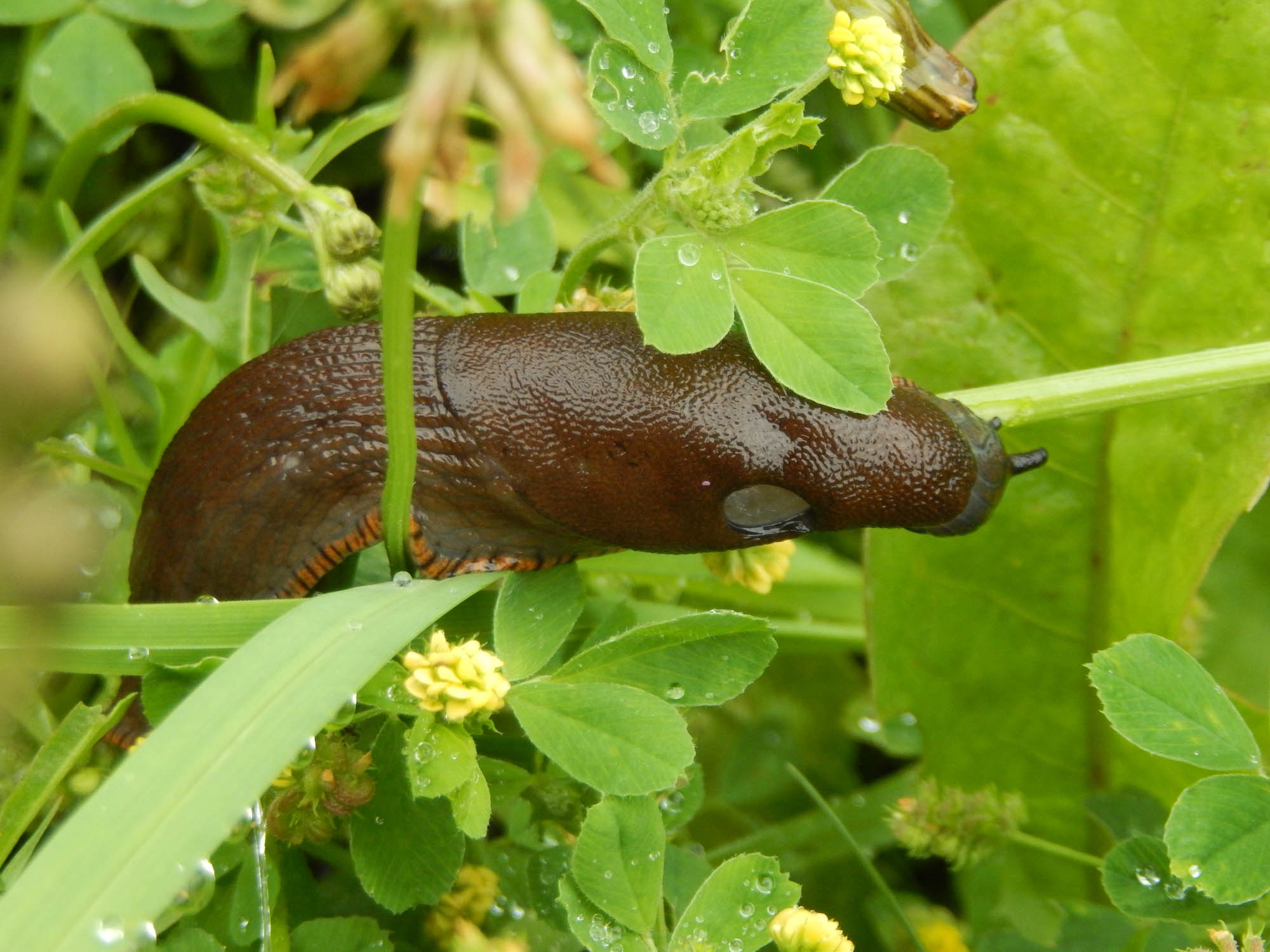
Slugs
becoming an increasing issue with climate change
Slugs are a relatively new enemy of Saskatchewan gardeners. They hitchhiked on greenhouse plants shipped from other provinces and states. As the prairie climate becomes warmer, conditions are more favourable to these invasive creatures. They like cool, dark and moist places to hide in summer and sometimes their eggs can survive our winters. Mostly though, they like to munch their way through leafy seedlings, vegetables and other plants in spring and early summer.
Slugs are relatives of snails but do not have a shell. They have from two to four tentacles perched above their tiny black eyes. Their bodies are smooth, soft and legless and are covered with a thin, clear slime. Slugs vary in colour, from light grey to tan to light brown in colour, sometimes mottled and sometimes not.
Chemical-Free Slug Control
The Internet is littered with advice, both good and bad.
What is NOT effective:
- Eggshells, copper, coffee grounds, grass mulch, compost. Slugs exude a thick slime protecting them from sharp objects. They can and will crawl across all of these unharmed if there’s food to eat.
- Diatomaceous earth is ineffective as a barrier method (ie. it will not hurt them to crawl through it) though it may be effective as part of an edible poisonous bait. We don't recommend it as part of a poisonous bait as it will impact the local beneficial insects and earthworms and, as with all baits, it doesn't prevent your space from being prone to slugs. It is far more effective to practice the preventions suggested below for long term control.
- Salt (table, Epsom, etc). Salt will kill the slug inhumanely, but it will also damage your soil and compost wherever it is used. Sometimes the effects of salt poisoning are severe and not easily managed - there's a reason they say Rome salted the earth of their enemies!
What works:
- Mulch with shredded wood to add habitat for egg-eating predators.
- Encourage birds.
- Practice low water landscaping habits. (download our handout for details)
- Handpick with a flashlight at night.
- Place boards or inverted melon or grapefruit rinds near plants or on pathways. Flip them over in the evenings to remove or squish slugs.
- Sink bowls of cheap beer or yeasty water near ground level for slugs to drown.
- Install a plastic slug guard (thin, upside down L shaped lip) around the perimeter of raised beds so they can’t climb in.

